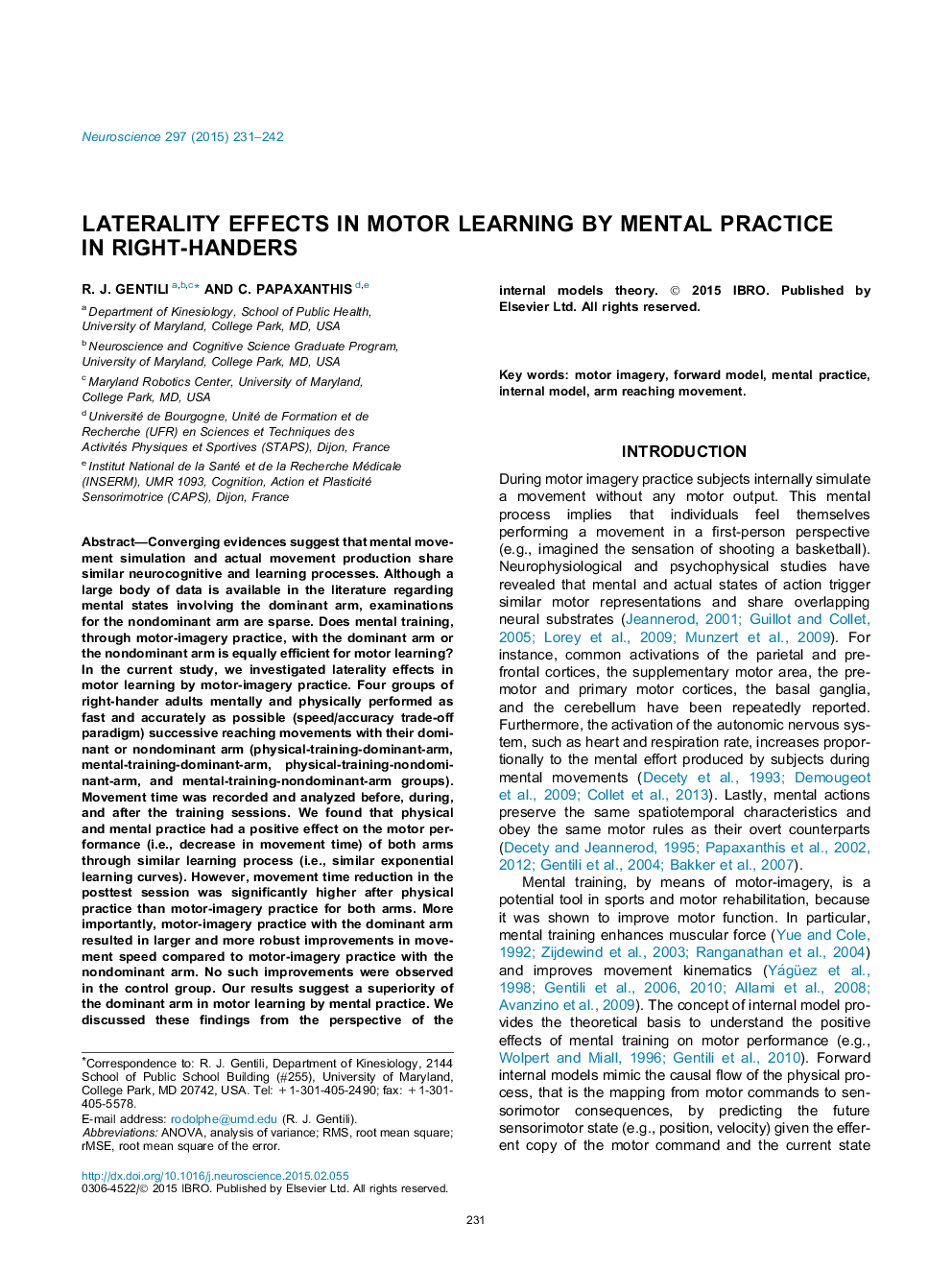| کد مقاله | کد نشریه | سال انتشار | مقاله انگلیسی | نسخه تمام متن |
|---|---|---|---|---|
| 6272309 | 1614779 | 2015 | 12 صفحه PDF | دانلود رایگان |
- Mental and physical practice share common plastic neural mechanisms.
- Forward models are proposed as the main mechanism for enabling mental practice.
- The hemisphere specificity in motor control is expanded to mental actions.
Converging evidences suggest that mental movement simulation and actual movement production share similar neurocognitive and learning processes. Although a large body of data is available in the literature regarding mental states involving the dominant arm, examinations for the nondominant arm are sparse. Does mental training, through motor-imagery practice, with the dominant arm or the nondominant arm is equally efficient for motor learning? In the current study, we investigated laterality effects in motor learning by motor-imagery practice. Four groups of right-hander adults mentally and physically performed as fast and accurately as possible (speed/accuracy trade-off paradigm) successive reaching movements with their dominant or nondominant arm (physical-training-dominant-arm, mental-training-dominant-arm, physical-training-nondominant-arm, and mental-training-nondominant-arm groups). Movement time was recorded and analyzed before, during, and after the training sessions. We found that physical and mental practice had a positive effect on the motor performance (i.e., decrease in movement time) of both arms through similar learning process (i.e., similar exponential learning curves). However, movement time reduction in the posttest session was significantly higher after physical practice than motor-imagery practice for both arms. More importantly, motor-imagery practice with the dominant arm resulted in larger and more robust improvements in movement speed compared to motor-imagery practice with the nondominant arm. No such improvements were observed in the control group. Our results suggest a superiority of the dominant arm in motor learning by mental practice. We discussed these findings from the perspective of the internal models theory.
Journal: Neuroscience - Volume 297, 25 June 2015, Pages 231-242
